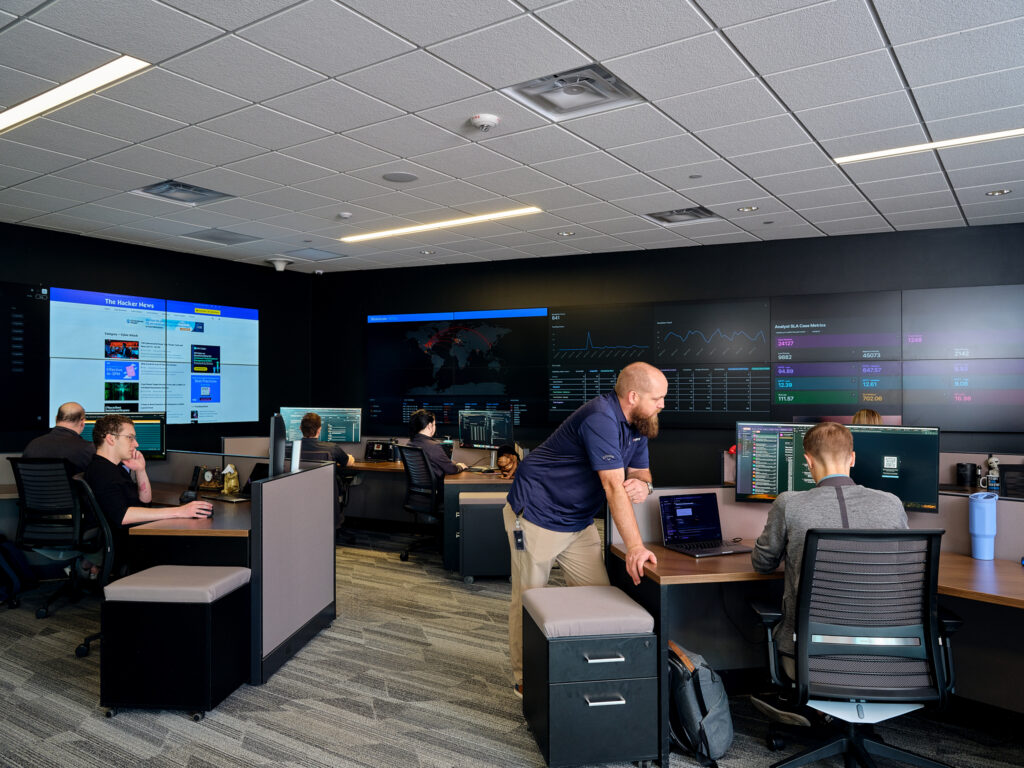Over time, though, I’ve learned there’s a better way. Through years of helping clients respond to real incidents and managing vulnerabilities for sprawling environments, I’ve shifted from chasing every headline to focusing on what actually matters: understanding how breaches happen, mapping exposure, and getting a grip on attack surfaces. Sure, sometimes a new vulnerability—like a VMware zero-day that could ransom all your VMs—demands immediate action. But more often than not, true security comes down to the basics. Yes, I know—yawn—but hear me out. These fundamentals can save you from drowning in the vulnerability deluge.
In this post, I’ll break down what I’ve learned, share some real-world lessons, and offer practical vulnerability management best practices to help you stay sane in a world of endless threats. Let’s dive in.
The Chaos of Chasing Vulnerabilities: Why It’s Inefficient
Picture this: you’re responsible for securing a network with over 10,000 servers. Every time a new vulnerability hits the headlines, management yanks you off your regular work and sends you on a wild goose chase. Is the affected product in our environment? What version is it running? Do we need to manually scan it to validate? Meanwhile, your monthly reports are screaming about unpatched Windows 2003 servers with critical flaws so glaring a novice could exploit them with a quick Google search and a GitHub pull.
I’ve been there. It’s what I like to call “Vuln Whack A Mole”—reacting to every new vulnerability report as if it’s an emergency, only to lose sight of the bigger picture. It’s chaotic, inefficient, and a one-way ticket to burnout. The reality is, you can’t fix everything at once, and trying will only distract you from the real work of securing your environment.
Asset Inventory: The Bedrock of Effective Cybersecurity
So, what’s the antidote? It starts with something deceptively simple: asset inventory. You can’t protect what you don’t know you have—it’s that straightforward. Yet, I’ve seen too many organizations gloss over this step, and it’s a massive blind spot.
Asset inventory isn’t just a list of devices, though. It’s about context: what each asset is, who owns it, who can access it, and what it’s used for. Without this, you’re guessing in the dark when a new vulnerability drops.
Let’s break it down with an example. Imagine two assets:
– LAPBILL22: Billy’s Windows 10 laptop, used for everyday work. It might connect to internal resources or the occasional public Wi-Fi.
– WEB01: A Windows web server hosting a public-facing application, exposed to the internet 24/7.
Both run Windows, but their purposes—and risks—are night and day. Billy’s laptop might face threats like phishing emails or dodgy browser downloads. The web server? It’s a buffet for attackers—think SQL injection, unpatched software, or misconfigurations. If a new vulnerability targets web server components, **WEB01** is your priority, while **LAPBILL22** might not even be affected.
This is why asset inventory is a game-changer. It’s not just about knowing “I have a laptop and a server.” It’s about understanding their roles and risks so you can act smarter, not harder.
Understanding and Mitigating Attack Surfaces
Once you’ve got your assets mapped, the next piece is understanding their attack surfaces—all the ways an attacker could break in. For Billy’s laptop, that might be email clients, browsers, or outdated software. For the web server, it’s open ports, running services, and anything internet-facing.
Why does this matter? Because it lets you filter the noise. When a new vulnerability comes out, you can ask: “Does this affect my assets? How exposed are they?” Take a hypothetical “Remote Code Execution on {Insert VPN Vendor}” alert. If that VPN is running in your environment—especially if admins use it to access sensitive systems—you’ve got a problem. I’ve seen cases where exploited VPNs let attackers hit network shares, log in from unapproved countries, and run red-team tools on domain controllers. That’s a P1 incident—drop everything and patch it.
But if you don’t use that VPN, or it doesn’t connect to anything important (aka low-risk), you can skip the urgency (while not fully ignoring it, obviously). Knowing your attack surfaces turns a flood of alerts into a manageable stream.
How to Prioritize Vulnerabilities Like a Pro
Here’s where it all clicks: with a solid asset inventory and attack surface insight, you can prioritize vulnerabilities instead of chasing every ambulance. Not every flaw deserves your immediate attention—it’s about risk, not reflex.
Try this simple framework:
1. Asset Criticality: Is it a domain controller or a test machine?
2. Vulnerability Severity: Remote code execution or a low-impact bug?
3. Exposure: Internet-facing or locked down internally?
A critical flaw on an external web server? Patch it now. A medium-severity vulnerability on an internal laptop? It can probably wait. This approach keeps you focused on what keeps the lights on.
When to Sound the Alarm
That said, some vulnerabilities do warrant a fire drill. I’ve seen a zero-day in a virtualization platform turn VMs into ransom bait—production environments were toast if unpatched. Another time, a VPN exploit let attackers completely pwn a network in less than a few hours, including exfiltration.
But here’s the catch: you can only respond fast if you know what you have. Without an asset inventory, you’re groping in the dark, praying you’re not vulnerable. With it, you can assess, prioritize, and act—sometimes even before the headlines hit.
Back to Basics: The Key to Resilient Cybersecurity
At its core, vulnerability management isn’t flashy—it’s foundational. Asset inventory and attack surface awareness aren’t glamorous, but they’re what separate chaos from control. They let you prioritize what matters, ignore the hype, and build a resilient environment.
Next time a zero-day comes across your feed, pause. Check your inventory, gauge your exposure, and decide if it’s worth the fuss. More often than not, you’ll find that sticking to the basics—patching critical assets, monitoring anomalies, and keeping good hygiene—beats chasing every new threat.
Because here’s the truth: you can’t protect what you don’t know you have. Start with the fundamentals, and the rest falls into place.
Need help managing vulnerabilities? Contact us to learn how we can streamline your cybersecurity efforts and keep your organization secure.







